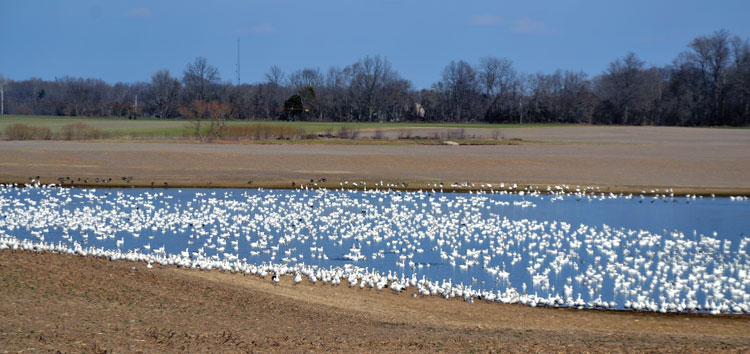With spring just around the corner, don’t miss the opportunity to observe some of the migratory species that only visit our region during the winter months. Lion’s mane jellyfish, snow geese, and tundra swans are just a few.
Lion’s mane jellyfish come from the colder waters of the Arctic and Northern Atlantic and reach the Bay between January and April. Named for their red and yellow tentacles, which resemble a lion’s mane, these jellies range in color from red and purple to orange and tan. The largest of the species stay in northern latitudes while the smaller ones, which tend to be orange and tan, come farther south and can be found in our area. Lion’s mane jellyfish can be as small as six inches in diameter, but the largest ones grow to eight feet, with tentacles nearly 100 feet long.
If you’re travelling or hunting near the harvested corn fields of the Eastern Shore you may see flocks of snow geese, which arrive after spending their summers in the Canadian and Alaskan Arctic. Although generally known for their white bodies and dark wing tips, some snow geese have a blue hue, which comes from a single dominant gene. Hunting the snow goose was off-limits in the eastern U.S. from 1916 to 1975, due to low population numbers. However, snow goose populations are now quite strong.
Another migratory bird that visits us in winter is the beautiful tundra swan, which nests in the arctic tundra when not migrating south. These graceful birds can be identified by their white feathers, black feet and legs, and black bill with a yellowish spot close to the eyes. Sometimes called whistling swans because of the sound made by their beating wings, tundra swans are one of the largest arctic birds, with a wingspan reaching up to 85 inches. Although swans can be aggressive, this variety is usually shy of people and stays in wildlife sanctuaries, open fields, and estuaries, feeding on grain from harvested fields and clams dislodged from the mud of the Bay.





